Aug 27, 2010 31
A Quadrillion, To Scale
By David Dick-Agnew
 f you’re like me — like most people — you probably have a hard time holding the concept of a quadrillion in your mind. Even a million is a little hard to wrap your head around. This means that when someone throws out the fact that Warren Buffett is sitting on $62 billion, or that the US debt is over $13 trillion, it’s more or less meaningless. How can we grasp the importance of these ideas if we can’t even comprehend their scale?
f you’re like me — like most people — you probably have a hard time holding the concept of a quadrillion in your mind. Even a million is a little hard to wrap your head around. This means that when someone throws out the fact that Warren Buffett is sitting on $62 billion, or that the US debt is over $13 trillion, it’s more or less meaningless. How can we grasp the importance of these ideas if we can’t even comprehend their scale?
To help to better visualize the relative weight of these amounts, I’ve thrown together this handy illustrated guide. The scale is more or less consistent, so walking through the next 6 images will hopefully show how these orders of magnitude stack up.
First off, 1:
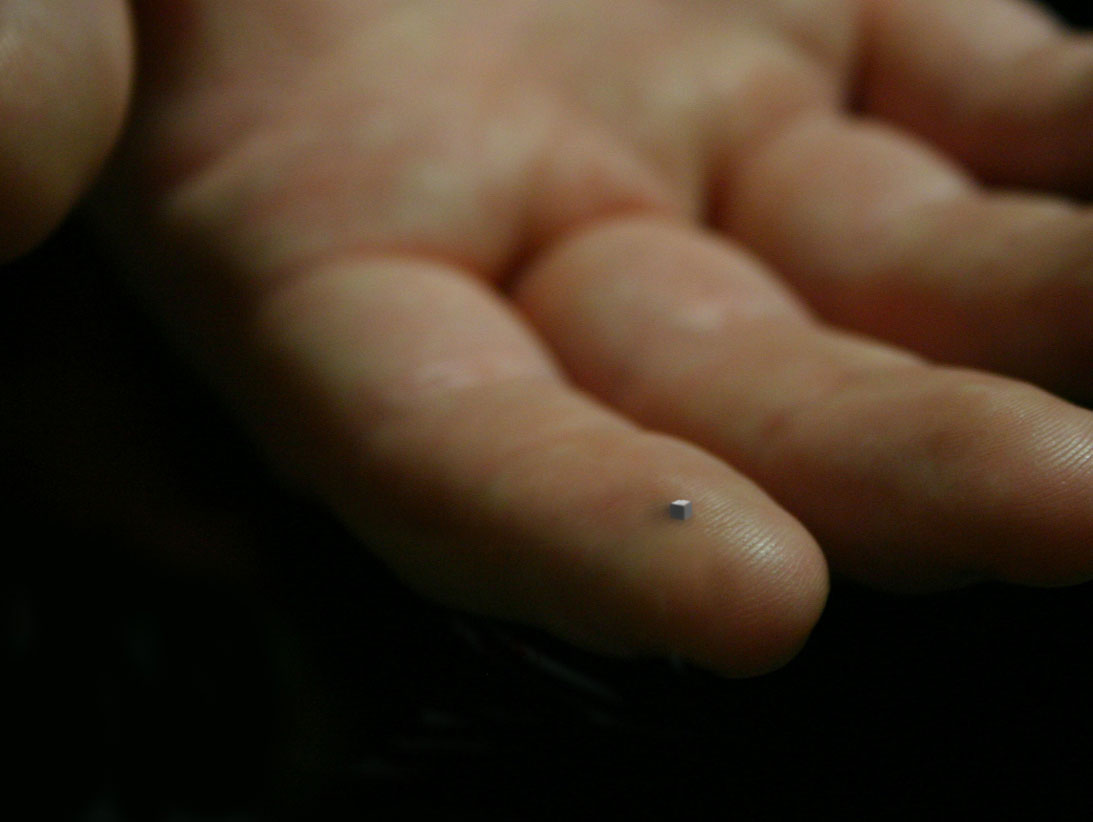
For the purposes of this guide, 1 = 1 cubic millimeter. That’s less than 1/16″, for all you imperialists out there. Roughly the size of a grain of coarse sand, or a honeybee’s brain. Keep that in mind — that’s our basic unit of measurement.
To stack these little guys ten high, ten wide, and ten deep, it would take 1 thousand (1,000) of them (10 x 10 x 10, or 10³ if that helps). 1000 of these units would fit into a space the size of a sugar cube:
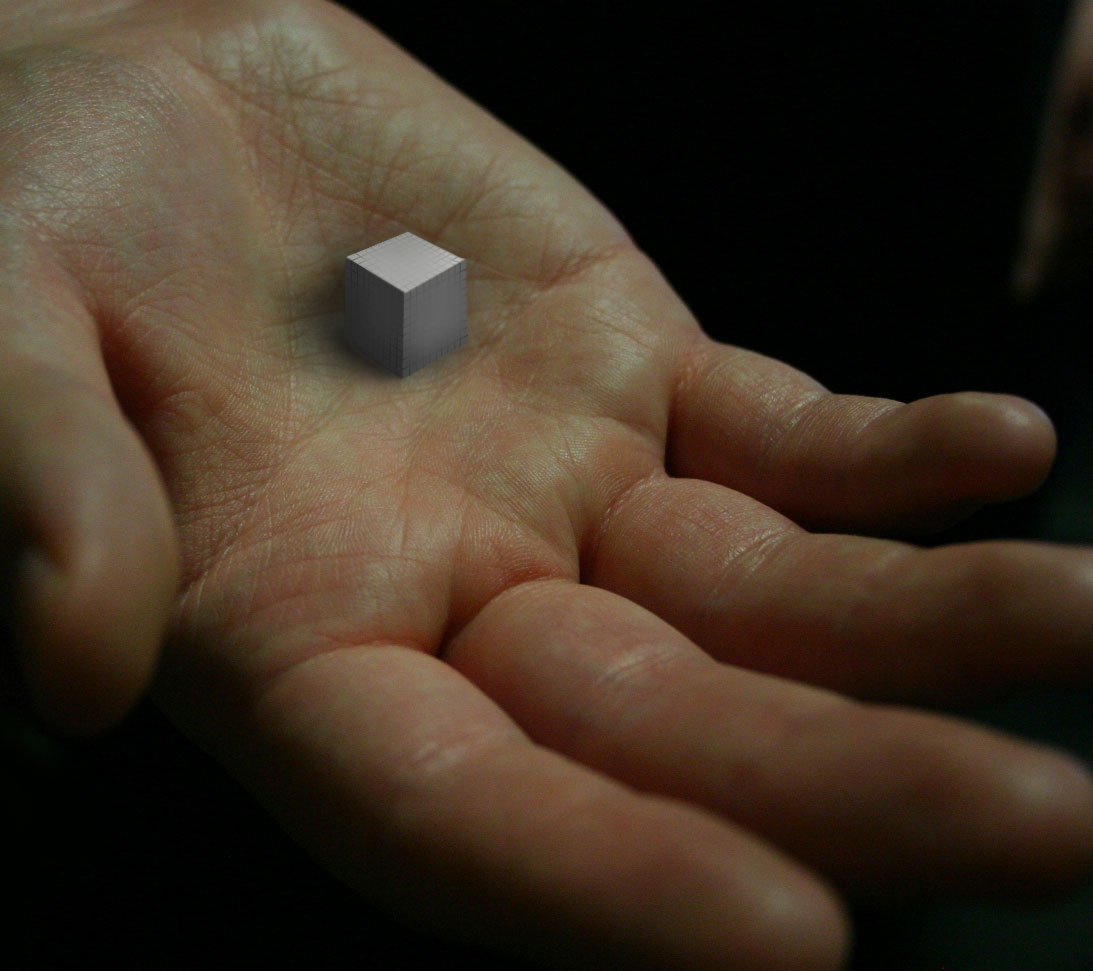
Most people measure their income in the scale of these sugar cubes. The average American, working full-time, pulls in about 40 of these a year. Not enough to make a single handful. Or, to look at it another way, this represents roughly the number of words it would take to replace this picture.
If you stack these sugar cubes 10 high, 10 wide, and 10 deep (which would take 1000 of them, or 100 x 100 x 100 of our original tiny single unit), you will have 1 million (1,000,000) of of the original unit of 1:
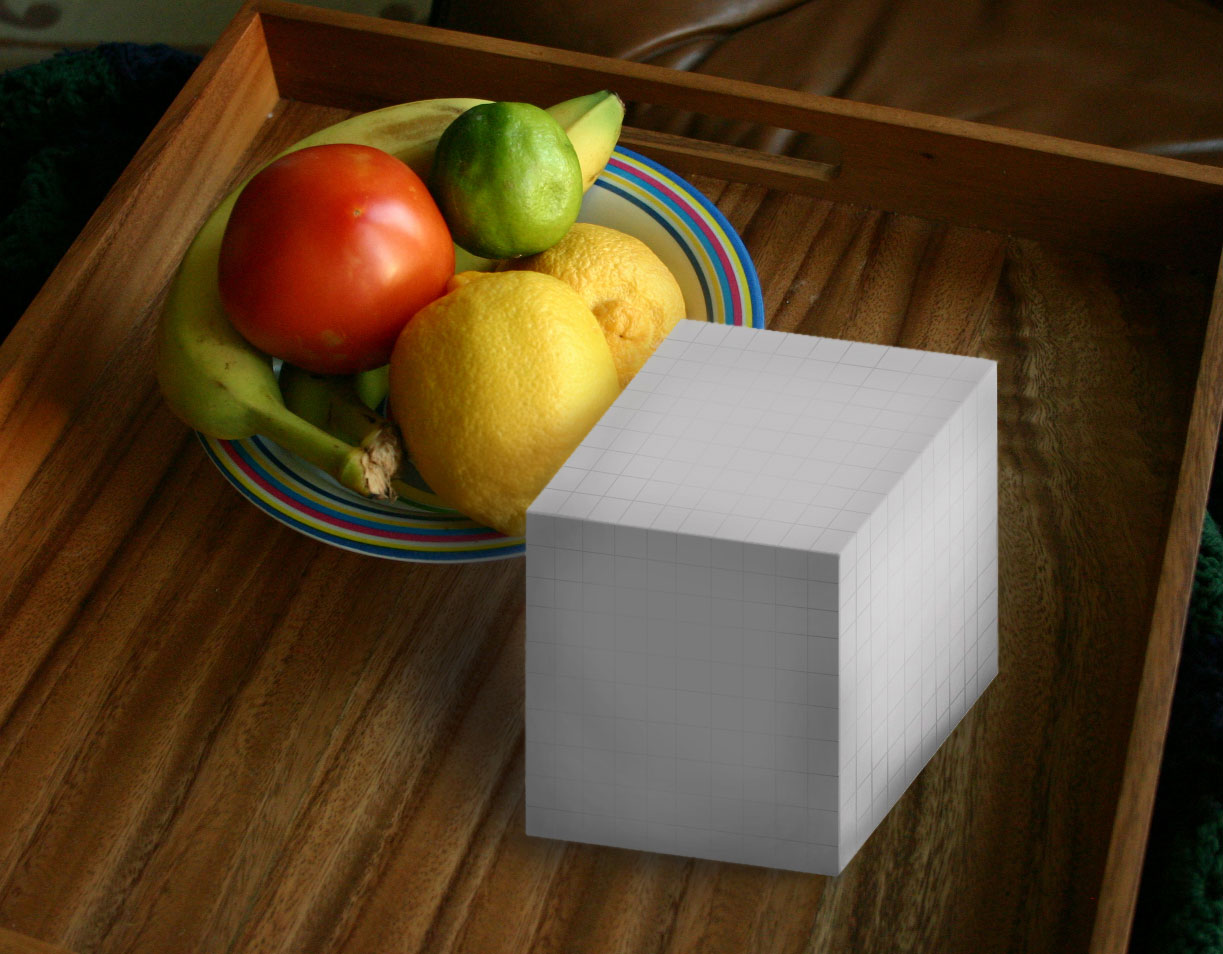
That’s roughly one for every person living in San Jose, America’s 10th most populous city. Still fits nicely on an average breakfast tray. But bearing in mind that it’s made up of bits the size of grains of sand — that’s still a lot of them.
Incidentally, this is also 1 liter in volume. Fill it with water and it will weigh 1 kilogram. Ah, the metric system!
To stack these 1-liter-sized cubes 10 by 10 by 10 would take 1 billion (1,000,000,000) of our basic 1mm³ units:
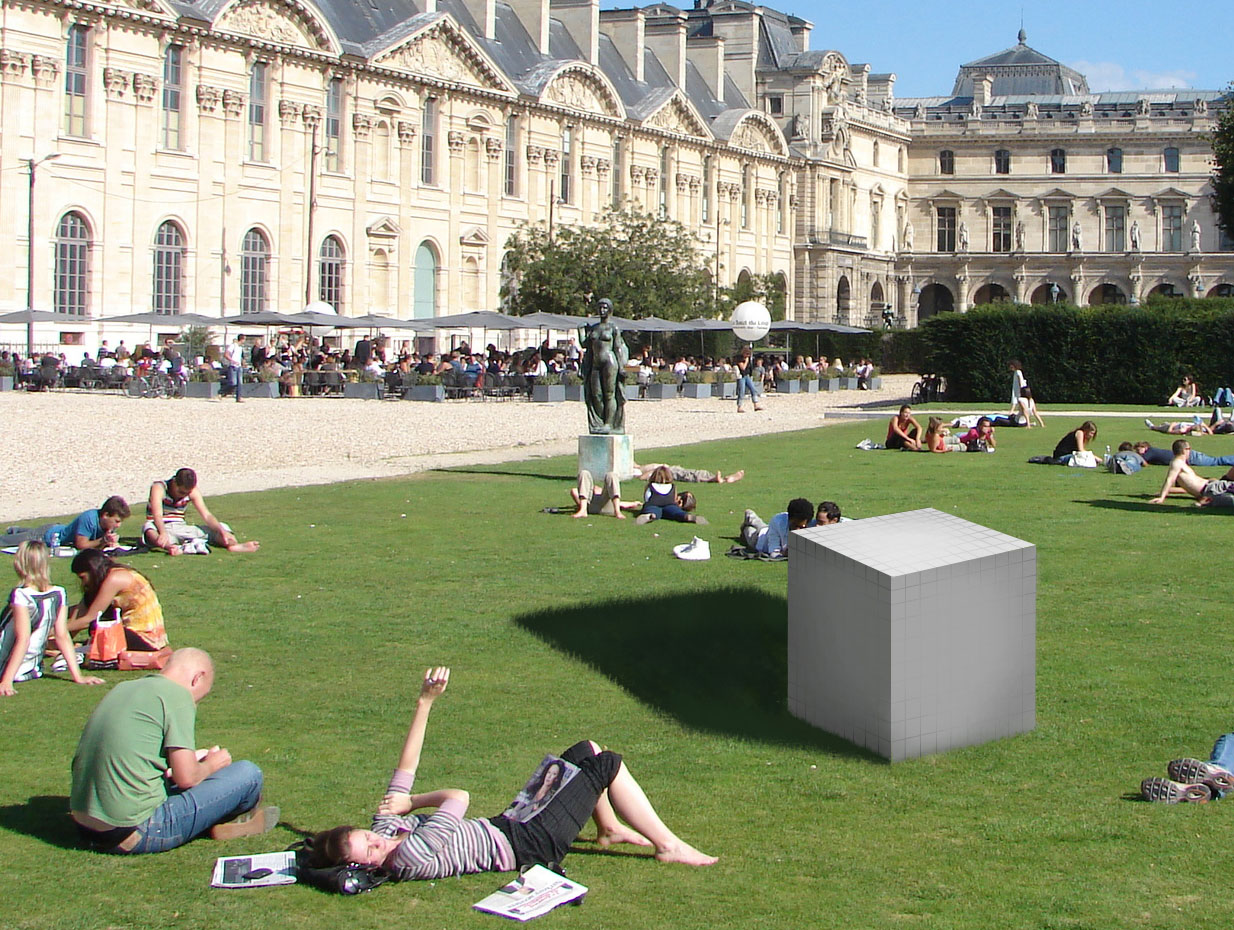
1 billion is how much it costs, in dollars, to buy approximately one third of a Virginia-class nuclear submarine. It’s how much money Avatar made (international box office gross) in only 17 days. Warren Buffett gave 37 of these to the Bill & Melinda Gates Foundation in 2006. But it would take the average American, working full-time, 25,000 years to earn just one of them (and it takes 1 year for Djibouti’s entire population of 864,000 people to do the same). It’s expected that next year, the world population will reach 7 billion; imagine 7 of these in a row, and there’ll be one grain of sand for every person alive. And it would take at least 20 of them to represent all the websites on the Internet.
If you could manage to find enough of these 1m³ cubes to stack them 10 high, 10 wide, and 10 deep, you’d be looking at 1 trillion (1,000,000,000,000) of our starting units:
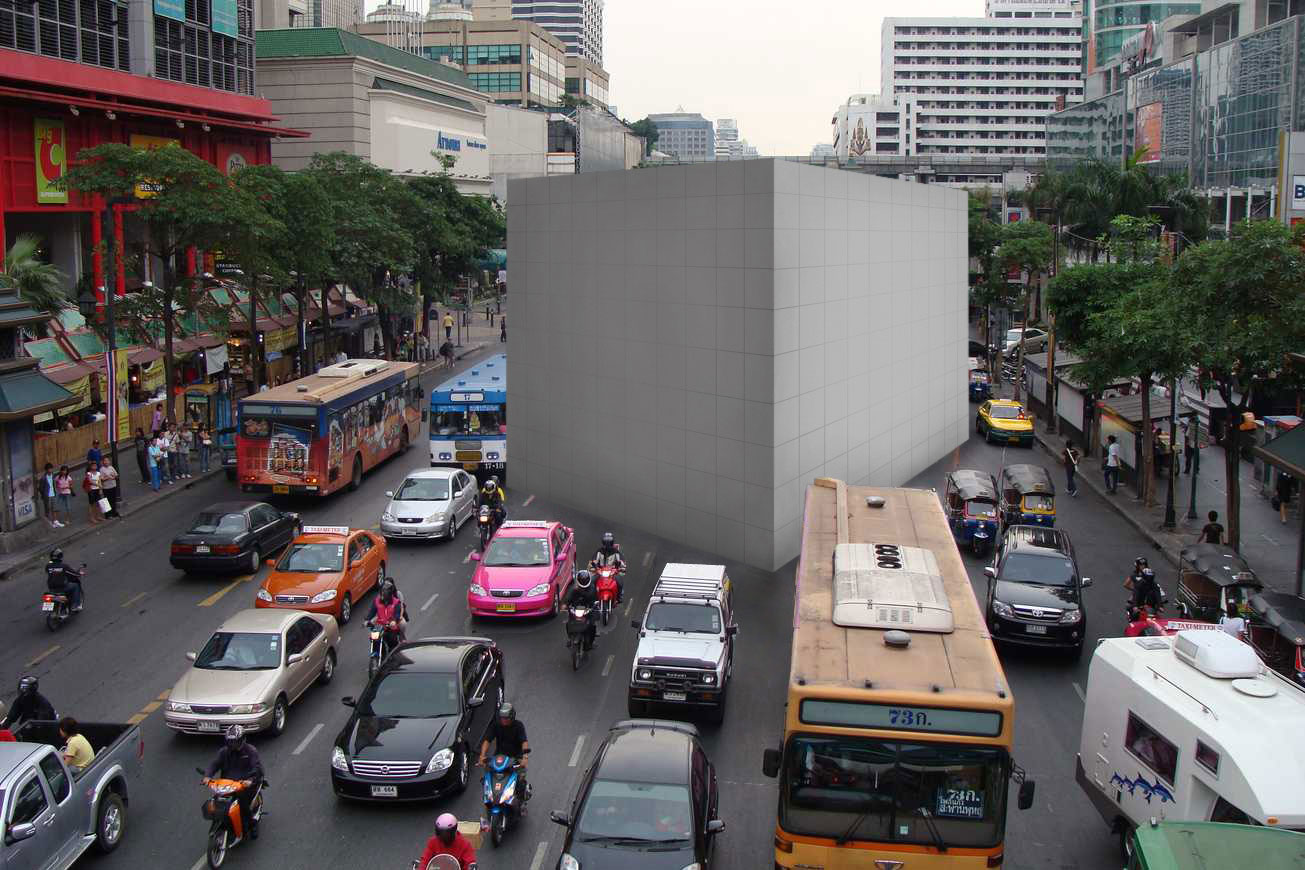
Enough to cause some pretty bad traffic. This is getting up into the range of pure abstraction, and yet there are a few things we measure in the trillions. It would take 5 of these mammoth blocks to represent Japan’s GDP in a year. Australia’s would take just 1. America’s GDP would require 14, its debt would take 13, and its bank bailout 10. One of these could purchase all homes foreclosed in America in 2007 and 2008 combined.
It would take between 60 and 100 of these trillion-cubic-millimeter blocks to represent all the synapses in the human brain.
And it would take a whopping 200 of these massive blocks to represent every ant on Earth. And given that each ant is, on average, a little bigger than a large grain of sand, that means if you put all the ants on earth in a single place, these buildings — and these poor people — would be buried.
But it would take even more than 200 of these blocks — 5 times as many, to be exact — to reach 1 quadrillion (1,000,000,000,000,000):

This is a number so huge, it has basically no practical applications (unless you wanted to talk about the number of ants that lived in the past 2 and a half years). It would take between 2,500 and 10,000 galaxies like our own to total a quadrillion stars — maybe as much as a tenth of the surveyed universe.
The average American, working full-time, would have to work 250 million years to earn 1 quadrillion pennies. If you’d started when the continents still formed the single land-mass known as Pangaea, you’d just about be there by now. Of course, a quadrillion pennies would weigh 2,500,000 metric tonnes, equal in weight to Russia’s entire grain imports in 2010 — that would require a pretty big piggy bank.
Back to the human brain: it’s estimated that our synapses each fire about 300 to 400 times per second, but at peak moments they can fire as many as 1000 times a second. It’s impossible for every synapse to fire at the same time, but we can still calculate the upper limit of possible brain events per second. Given the estimate of 60 to 100 trillion synapses, that means it would take between 18 and 100 of these mammoth, skyscraper-sized blocks to represent the range in the number of events the human brain is capable of sustaining in a single second. That’s a whole city! And in 10 seconds? That’s right: it would take up to 1,000 of them — 1 quintillion (1,000,000,000,000,000,000) mm³ in total. Now if that doesn’t beat all.
By all means, keep going. If you have any other things measurable in billions, trillions, or quadrillions, I’d love to hear about them! That’s what the comments are for. ![]()
